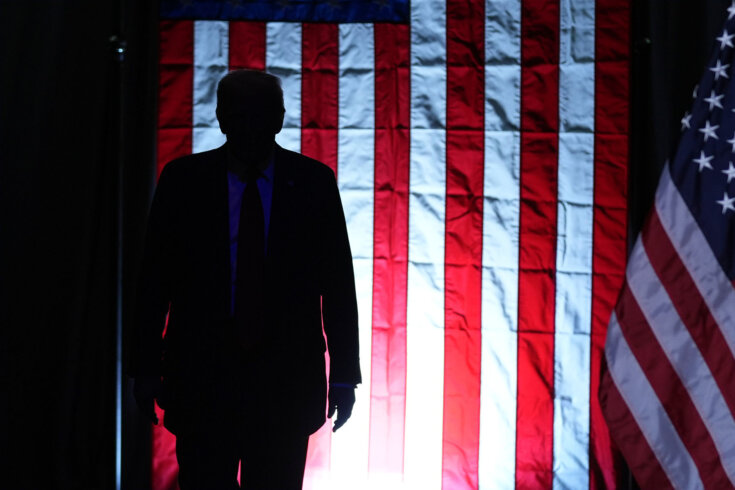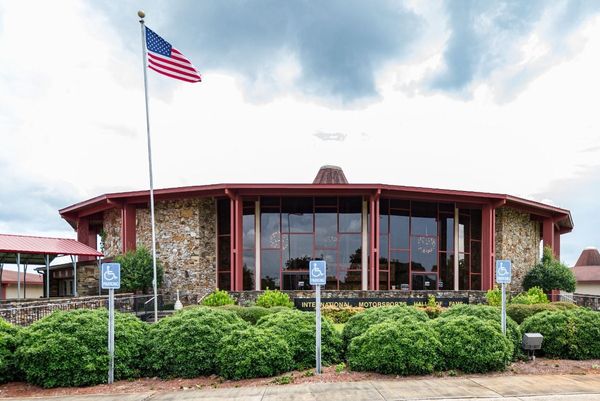
Many Americans woke up to the fact that democracy was in trouble only on November 9, 2016, the day after Donald J. Trump was elected president of the United States. Others, who had known trouble for much of their lives, in the US and around the world, were less surprised but more directly threatened. The promise of democracy seemed to be at greater risk than at any time since the 1930s. Although large majorities of the American public support far-reaching—and urgently needed—political, economic, and social reforms, their desires are held in check by our radically unrepresentative political institutions.
But the motivation to renew, deepen, and broaden the democratic promise was also unmistakable in the wake of Trump’s election: the Women’s March, the airport protests of the Muslim ban, the emergence of Indivisible and thousands of popup groups, the youthful March for Our Lives against gun violence, the Sunrise mobilization for the “Green New Deal,” and the Democratic wave of the 2018 midterm election.
And then, just as the movements were building momentum, COVID-19 disrupted everything. The pandemic confronted us with the radical vulnerability of those without the wealth or status to protect themselves in the absence of a responsive and effective government. Not unlike the 2008 economic crisis, the rich only got richer while the rest struggled to survive. Many had to find the resilience to sustain the avoidable loss of parents, partners, children, friends, colleagues, and school days. Even as outrage at the murder of George Floyd mobilized millions, Black and white alike, to assert the value of Black lives, a hoped-for democratic renewal in the 2020 election fell short as 74 million people voted for Trump—with a higher number voting for him in this year’s election—many of whom remain committed to scuttling democracy. Despite the historic levels of mobilization since 2017—and key successes—organized constituencies with the depth, breadth, unity, and imagination to launch a movement capable not just of defending democracy but of achieving it remain more of an aspiration than a reality.
Democracy is not only a form of governance. It is a promise: a promise that we can live with one another in dignity, equality, solidarity, security, justice, and hope. Practising democracy can enable us to grow, to learn, to care, and to act. Democracy promises “life, liberty, and the pursuit of happiness,” but realizing this promise requires that a society commit to governance based on the equal value of each of our voices; discernment of our common interests through association, deliberation, and learning; and respect for the exercise of individual and collective agency.
In reality, however, this promise—problematic since America’s founding as a half-slave and half-free nation—has narrowed, especially since the 1970s. Despite real gains in the fight against racial, gender, and ethnic inequality, an accelerating concentration of wealth drives ever greater economic inequality. Public education deteriorates even as access to higher education narrows. To go to college, young people must mortgage their futures even before they have begun to live them. And most of us feel less safe, not more, driving those who can afford it to retreat behind gated walls and private security.
This deterioration of collective public capacity did not just happen. Beginning in the 1960s, right-wing reaction to the successes of the civil rights, women’s, youth, anti-war, and environmental movements took root. In the 1970s, the economic crisis offered private sector leaders and their political and academic allies an opportunity to commit national elites to “free market” or neoliberal ideology, policies, and programs. Conservative organizers, advocates, and politicians blended these currents in a politics that delegitimized democratic government, marginalized public institutions, and lionized private wealth—all trends epitomized by Donald Trump. Eventually, this movement leveraged control of the Republican Party into control of the federal government, the very institution they were hell-bent on ravaging. Trump may well be unique in the depth of his moral and empirical nihilism, his sociopathic focus on personal domination, and his dangerously erratic narcissism, but he and his wrecking crew were, and are, ugly symptoms rather than root causes of the current threat to democracy.
Worse still, the democratic political processes that movements had used to leverage power to counter these threats have been commodified, monetized, and marketized. After 1976, when the US Supreme Court decided in Buckley v. Valeo that money equals speech, political spending could not be constrained. This launched the powerful electoral marketing industry, a phenomenon almost unique among liberal democracies. In 2020 alone, this industry earned $14 billion (US) in the process of turning politics into marketing, campaigns into advertising, candidates into brands, voters into data points, and dialogic debate into one-way messaging. This transformation of the electoral “means of production” was driven by the new class of professionals who manage campaigns’ polling, television, direct mail, computer targeting, and digital media. Because their earnings depend on commissions, the more money they spend, the more money they make, transforming us from citizens into clients or customers.
Nor is this political pathology limited to electoral campaigns. Advocacy groups, many of whom depend more on philanthropic donors than on organized constituencies, became enthralled by similar, digitally driven marketing campaigns. They contract with the same firms, which are often active in both the electoral domain and the private sector. These firms’ methods confuse numbers with impact, mobilizing with organizing, and top-down control with bottom-up representation.
All this was brought into sharp relief by a pandemic that starkly revealed how a system that served the few failed to serve the many by almost any metric—in health, education, security, employment, income, and housing. The political, economic, and racial dividing lines were impossible to miss. Political failures in managing the triple challenges of globalization, financialization, and digitalization undermined democracy by facilitating concentrations of wealth; religious, racial, and class division; and the erosion of the civic infrastructure that Alexis de Tocqueville, reporting on American democracy in the 1830s, described as “the great free schools of democracy.” This deterioration is particularly egregious in the US, where archaic political institutions empower unrepresentative minorities to block action in majority interests, resulting in consistent, gross, and frustrating democratic dysfunction. But this is not only an American problem. The promise of democracy is at equal or greater risk in countries around the world as authoritarian regimes become entrenched.
This is not how it was “supposed” to be. And it is not how it has to be.
Millions of Americans could strengthen democracy by practising it. Tocqueville argued that, in a democracy, “knowledge of how to combine” is the “mother of all forms of knowledge.” Yet it is precisely Americans’ useful knowledge of the practices that enable purposeful collective action that we have allowed to atrophy. Many are out of practice at coming together, committing to one another in pursuit of a shared purpose, deliberating together, deciding together, and acting together—the essential practices of democracy in its most everyday form. The same goes for skills related to group decision making, managing internal conflict, or holding one another accountable—the most basic democratic practices. We see, hear, and read about the major threats to democracy every day, but a closer look reveals the depth of the challenges we face in our everyday lives.
Effective public voice arising from commitment to common purpose—a political process—has become rare indeed. As philosopher Elizabeth Anderson argues in Private Government, people now live most of the time within private authoritarian bureaucracies or firms in which they own nothing, have no authority, and constantly must resist incursions in their private life. Or they shop in markets that aggregate individual momentary preferences in what some purport to be the voice of the whole. Public voice grows quite faint.
Meanwhile, proponents of market solutions argue they transform individual preferences efficiently into optimally beneficial common outcomes absent shared commitments, deliberation, and decision making. They have extended their well beyond economics into policy domains of all sorts, promoting market solutions to global warming, market solutions to health care crises, market solutions to the deterioration of public schools, and, of course, market solutions to problems of the market itself! After all, it is far easier to mobilize individuals to send emails or to show up at a rally than it is to develop the leadership, organization, and constituency needed to strategize, sustain, and build power over the long haul.
At the same time, young people since the 1960s became increasingly suspicious of the power structures that they experienced as constraining their individual autonomy or freedom to do their own thing while also fearing the assumption of any collective obligation. Thus, despite their energy and commitment, sooner or later, their power is restricted by what feminist sociologist Jo Freeman called the “tyranny of structurelessness.” She argues that there is no such thing as an entirely “structureless group.” The absence of a transparent formal structure only disguises opaque, informal, personalistic, and unaccountable structure, which ensures its dysfunction. This collective disarray cannot begin to contest the power of increasingly concentrated wealth. And it is this erosion of our capacity for collective action that sapped our power to confront the sources of inequality, creating a growing surplus at the top and deepening deficit at the bottom.
This, in turn, has enabled a “philanthropic” colonization of the civil society within which people-based politics and social movements had been rooted. Constituency-based power has thus been replaced by donor-based patronage, which expands the power of private wealth even more. Self-governing, bottom-up membership associations are replaced by donor-governed, top-down memberless “firms,” NGOs barred from partisan politics lest they compromise their donors’ tax benefits. Access to public power now depends far more on ownership than on citizenship.
Organizing is how an inclusive, interdependent, and united citizenry can transform the desire to achieve change into the power to create change. Organizing is how America built the social movements that Americans have used throughout history to achieve change. Temperance advocates, abolitionists, populists, suffragettes, the labour movement, the civil rights movement, the women’s movement, the racial justice movement, the gender justice movements—all have relied on hopeful organizing.
But not all social movements strengthen democracy. Fear-based organizing undermines democracy: white supremacist, anti-immigrant, anti-government, pro-gun, and anti–gender equity movements may very well use organizing tools. But by stoking fears of a powerful—and hated—“other,” everything comes to depend on its destruction, and action depends less on mindfully deliberate choices than on the dictates of a supreme leader with whom all can identify. Social movements based on hope can expand democratic access, even as social movements based on fear can constrain democratic access. It took movements of the latter to put us in this mess, and it will take movements of the former to get beyond it. So why don’t we build one?
Unless we invest new-found energy with the urgency to build a more robust, inclusive, and responsive democratic infrastructure, we will miss the progressive possibilities of this moment. Can we turn the strength of our reaction to the rawness of this moment into commitments to each other to develop the moral, strategic, and organizational capacity we need to reclaim the democratic promise?
In the US, real challenges to the status quo—the kind of challenge we need if people who work are to retake their power from those who own property—have often come in the form of social movements. These movements have combined personal, community, and political change. They have linked local organization to state and national strategy, and they have fought to put their values in place. Movements emerge from the efforts of purposeful actors—individuals or organizations—to respond to conditions they experience as unjust. They also emerge in response to opportunities to assert new public values, form new relationships rooted in those values, and mobilize political, economic, and cultural power to translate these values into action.
Movements differ from fashions, styles, or fads in that they are collective, strategic, and organized. They differ from interest groups in that they not only reallocate goods but they also redefine them. Not content with winning the game, movements try to change the rules. When movements succeed in expanding the equality of voice, they strengthen democracy. When they narrow equality of voice, they weaken democracy.
We are again in a movement moment. People of all ages—and especially young people—are calling for societal responses to the climate crisis, racism, xenophobia, socioeconomic inequality, the housing crisis, transphobia, gun violence, and more. Our challenge is linking social-movement energy with organizational capacity to transform it into political, economic, and cultural power. This, in turn, depends on our capacity for leadership, organizing, and action. This is what the craft of organizing is all about. Organizers recruit, train, and develop leadership, build a constituency with that leadership, and enable this constituency to turn their own resources—time, energy, imagination, money—into the power they need to effectively pursue their goals. Although organizing is rooted in our everyday capacity for relating to each other, it is also a craft that requires training, learning, and coaching to bring intentionality, skill, and purpose to the work. It is not about providing services to dependent clients or marketing products to paying customers. It is about bringing individuals together to form constituencies able to exercise their individual and collective voices. Recall that “constituency” derives from the Latin “con” (with) and “stare” (stand): people who can stand together, learn together, work together, and win together.
Organizing people only begins with solving immediate problems—like making sure your candidate gets the most votes or putting up a “Stop” sign. It is about doing this and, at the same time, developing the leadership, organization, and power to take on structural challenges in the long run. Organizing is not about fixing a bug in the system, like offering a “safety net.” It is about transforming the cultural, economic, and political features of the system. I got hooked on organizing in the civil rights movement because the process showed me how people could find the resources within themselves and each other to create the power they needed to change the institutions responsible for their problems in the first place. That is what healthy democracy requires. In the words of American poet Langston Hughes, “Let America be the dream the dreamers dreamed— . . . The land that never has been yet—And yet must be—the land where every man is free. . . .”
Adapted and excerpted from People, Power, Change: Organizing for Democratic Renewal by Marshall Ganz, published by Oxford University Press, 2024. Reproduced with permission from the publisher.







